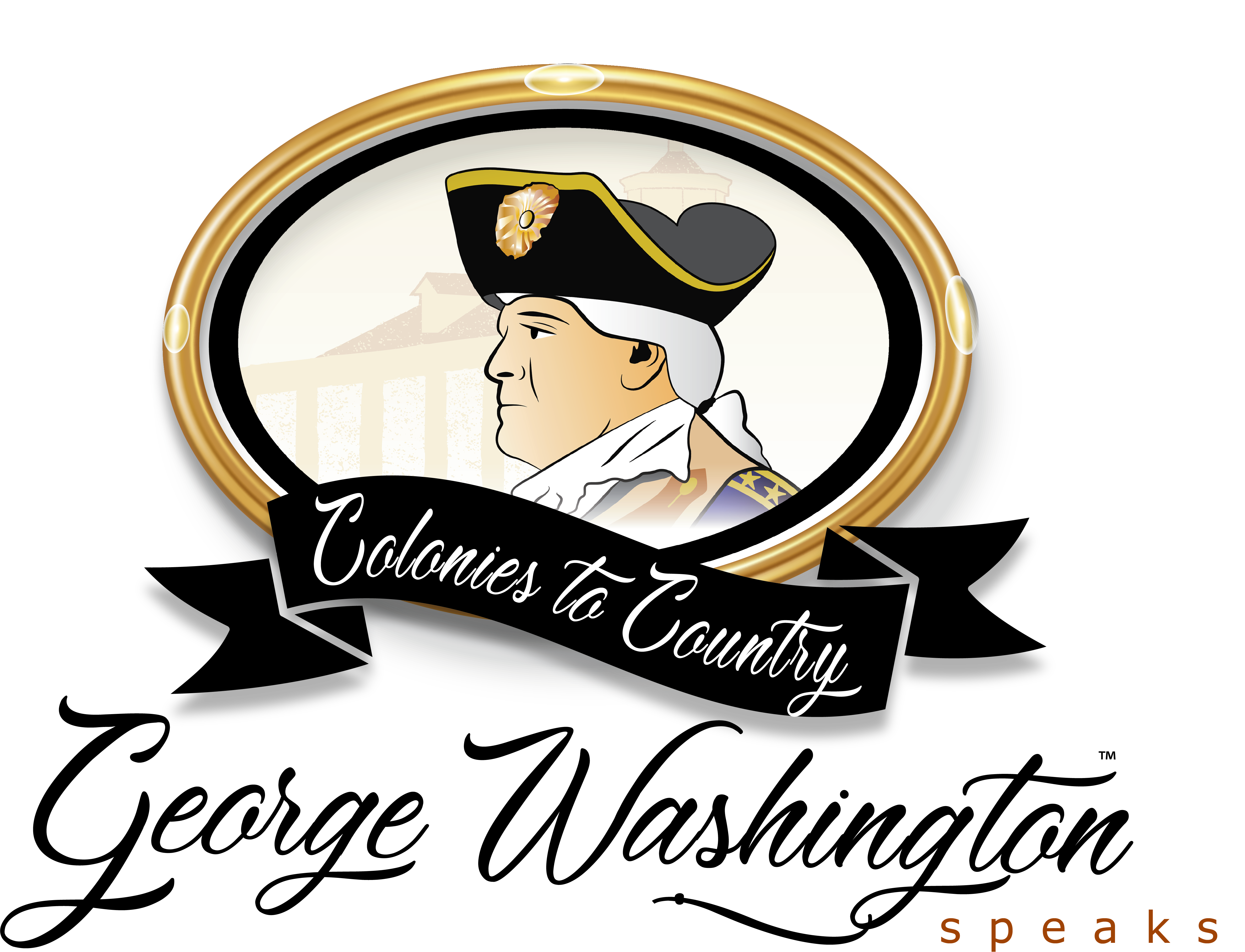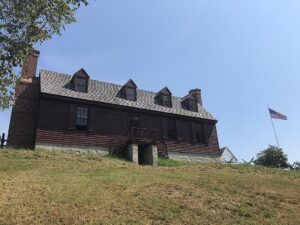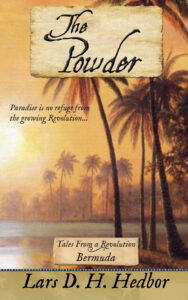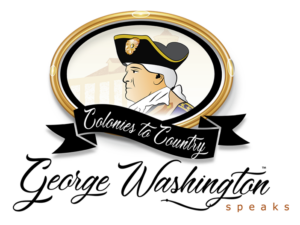
GEORGE WASHINGTON SPEAKS BLOG ARTICLES
OUR ARTICLES ARE CURRENT SO CHECK BACK AND KEEP UP ON OUR EVENTS AND NEWEST VIDEOS.
Have you ever wondered how George Washington came to be the trusted leader of the American Revolution and the new nation? What early experiences molded him and shaped his character?
The George Washington Speaks website includes nineteen videos on Washington’s family background and early life. Born at Wakefield, his family’s plantation on Pope’s Creek near the Potomac, Washington was a farm boy from birth. Throughout his life, he lived in the plantation environment of raising and selling crops, with much of the labor by enslaved people.
His family moved to Ferry Farm, near Fredericksburg, Virginia, when George was about six. Most of his youth was spent there. Consider how these events might have influenced his character and development:
His father’s community leadership and business ambitions
– A devastating fire at the Ferry Farm
– His father’s death when George was eleven years old
– Years in poverty, and lost opportunity for education, after his father died
– Greater responsibility as a youth, to help support his widowed mother
Because Ferry Farm barely produced enough to support the family, George sought other opportunities. At age sixteen, he trained in surveying using tools left by his father. He took some payment in land—mostly undeveloped property—and accumulated holdings in his own name.
His older brother Lawrence married into the prominent Fairfax family, and introduced George to the society of Virginia’s upper gentry. Though he was painfully shy, these relationships helped him develop social skills that served him well throughout his life.
I hope you will view and share the videos on our website—especially with teachers and students of American History.
Contact me anytime at georgewashingtonspeaks@gmail.com.
I am your servant,
Vern Frykholm
Nationwide celebrations lead to July 4, 2026
Parades, marching bands, burgers on the grill, and dazzling fireworks in the evening skies. Sounds like Independence Day, right? Don’t forget the potato salad and watermelon!
We may celebrate the event every year, but July 4 of 2026 will herald the 250th anniversary of our nation’s Declaration of Independence, a monumental milestone.
A Celebration in Every State
It’s America’s birthday, and plans are underway throughout the country to mark the occasion.
America250.org is the official ‘party planner’ with a nationwide initiative to honor the past, celebrate the present, and inspire the future. Here are a few of their current projects—with more to come!
-
America’s Field Trip engages schoolchildren through a multi-year art and essay contest, exploring the meaning of America.
-
Our American Story is an oral history project inviting all of us to document our own understanding of the United States.
-
America Gives challenges businesses, non-profits, schools, youth groups, faith-based networks, and organizations of all kinds to commit to increasing their level of volunteering and impact starting on Jan 1, 2026.
-
State level America250 groups are working throughout the nation to plan events and encourage counties and local communities to find ways to celebrate. Links on their website will take you to state and local partners.
How Are We Involved?
George Washington Speaks has seen a marked rise in requests for personal visits as well as a strong growth in interest on social media. We are eager to participate in the new events being planned at the state and regional level. In addition to the classroom and civic group presentations we often make, we are already planning for and scheduling fairs, parades, history-related public events, and sporting events. With years of experience in sharing America’s 18th century history, we look forward to collaborating with other groups to celebrate next year’s benchmark birthday.
How You Can Get Involved
Are you making plans to celebrate in a big way?
America250 is designed to be an inclusive celebration, inviting all Americans to take part in honoring the nation’s history. Here’s how you can get involved:
-
Attend local events – Many cities and states are organizing their own America250 celebrations.
-
Explore exhibitions – Visit museums and galleries featuring special installations related to the anniversary.
-
Share your story – America250 encourages individuals to reflect on their personal connections to American history and contribute to the national conversation.
-
Volunteer or donate – Support initiatives that promote historical education and community engagement.
Looking Ahead
As America approaches its 250th birthday, this celebration offers a unique opportunity to reflect on the nation’s journey, acknowledge its challenges, and envision a future built on unity, innovation, and progress. Whether through historical exhibitions, patriotic tributes, or community-driven events, America250 is set to be a defining moment in the country’s history.
For more details on upcoming events and ways to participate, visit the official America250 website.
Let’s honor the past, celebrate the present, and inspire the future—together.
Click to learn more about George Washington Speaks.
SURROUNDED BY PATRIOTS
George Washington didn’t live in a vacuum, and I cannot develop a clear picture of his life and times without learning something about the people around him. These include other colonial and national leaders as well as the men who served in the Continental Army, sharing the fight for freedom that Washington led.
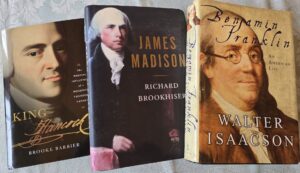
Some are household names in America, like John Hancock, famous for his bold signature on the Declaration of Independence. He is the subject of a 2023 biography by Brooke Barbier, titled King Hancock: The Radical Influence of a Moderate Founding Father.
Hancock and Washington were close in age, but grew up in vastly different circumstances—except for one. Both men lost their fathers at a young age. I look forward to delving into the details of Hancock’s life, and how he came to the Patriot cause.
Ben Franklin was a generation older than Washington and Hancock, and grew to prominence in Philadelphia as a newspaper editor and printer. But he had his hand in many pots, and Walter Isaacson’s biography, Benjamin Franklin: An American Life, reveals much about his interests in science, government, and international affairs.
James Madison was nineteen years younger than Washington, part of a generation who would carry the country through another war—with Madison as president this time. Richard Brookhiser’s biography James Madison fills in the details, from a young Madison’s admiration for Washington to his own service at the highest level.
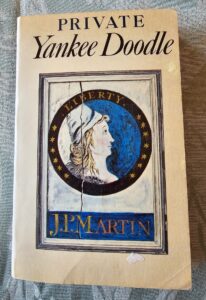
It would be a mistake to limit myself to the elites of the Revolutionary period, because the stories of ordinary citizens offer a valuable view. The wartime diary of James Plumb Martin, republished as Private Yankee Doodle in 1962, offers a foot-soldier’s account of life during the war. His colorful prose is entertaining and detailed.
I’m always looking for more to read about 18th century America, so if you have a recommendation, please let me know, via email to georgewashingtonspeaks@gmail.com.
WELCOME OUR GUEST LARS HEDBOR
This month we welcome acclaimed Revolutionary War novelist Lars Hedbor to the blog.

The American War of Independence Around the World
by Lars Hedbor
POP QUIZ!
Which of the following were locations where incidents directly connected to the American War of Independence took place?
a) Bermuda
b) Senegal
c) The Rock of Gibraltar
d) San Juan, Costa Rica
e) Pensacola
f) Minorca
g) Cuddalore, India
h) All of the above
If you answered “All of the above,” you were completely correct!
Why were so many nations involved?
The American War of Independence rapidly grew beyond a confrontation between American rebels and the British Crown, with the French entering the war allied with the future United States, and Spain declaring war on Britain in alliance with France. As all three colonial empires had holdings and interests across the globe, the war came to have a global scale.
Highlights from the 18th century “World War”
The Bermuda Powder Raid of 1775 involved Bermudan businessmen, who were both sympathetic to the American cause, and eager to restore trade with North America. After brokering a secret deal with Ben Franklin, they broke into the Crown’s store of gunpowder and handed the powder over to ships sent by the Americans. Most of what we know about this incident comes from the outraged proclamations and official letters sent by the loyal British governor, and despite substantial rewards, none of the plotters were ever definitively identified.
In 1778, French forces retook the capital, Saint-Louis, of Senegal, their former colony in West Africa. The British had taken Senegal in 1758 during the Seven Years’ War (known in North America as the French and Indian War), and France was eager to restore their dominion over the colony.
The Rock of Gibraltar was the scene of the longest siege in history, with the French and Spanish attempting in vain to seize this crucial outpost at the mouth of the Mediterranean from Britain. As many as 33,000 soldiers and 30,000 sailors besieged the island from June of 1779 through February 1783.
The later infamous British naval officer Horatio Nelson, along with Major John Polson, undertook a campaign in 1780 to take Granada, in the Spanish province of Nicaragua, in order to divide Spanish holdings in the Americas, and gain access to the Pacific Ocean. Despite success at Fort San Juan (today part of Costa Rica), the force was decimated by yellow fever, and with the loss of 2,500 men, the San Juan expedition was the greatest British disaster of the war.
Pensacola, in modern-day Florida (and then part of the loyal British colony of West-Florida), was besieged and taken in 1781 by the Spanish under the heroic leadership of Bernardo de Gálvez, in the culmination of his incredible campaign along the Gulf Coast to deny the British access to attack American forces from the West.
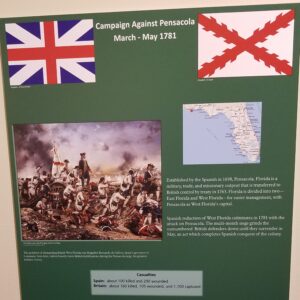
The Mediterranean island of Minorca was seized by a joint French and Spanish force in 1782, and was ceded to the Spanish at the end of the war. The British retook it in 1798, but it returned to Spanish hands in 1802, where it remains today.
The Siege of Cuddalore, India was the very last confrontation in the American War of Independence, pitting British and French-allied forces against each other in India. The siege took place in 1783, after the signing of the Treaty of Paris that ended the war, but before word of the peace had reached the distant outposts in India. It ended when news of the outbreak of peace reached them, bringing the long war to a final – if little-known – conclusion.
***
Thank you, Lars! At Saratoga National Historical Park in New York, I saw a wonderful display about the worldwide reach of the American Revolution, including the photos above. I recommend a visit. Vern
About Lars D. H. Hedbor
Hedbor is the leading novelist of the American Revolution, with sixteen books in print, each of which is set in a different colony or future state. In addition to writing about Bernardo de Gálvez’s Gulf Coast campaign in The Wind, his most recent novel, The Powder, is a telling of the story of the Bermuda Powder Raid. You can find more about Hedbor on his Web site at larsdhhedbor.com. His books are available at all online booksellers, and are published in ebook, paperback, hardcover, and audio formats. To get signed and personalized copies of his books, you can go to tfar.us/shop.
